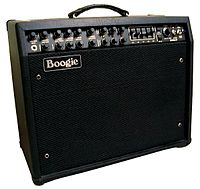
Photo from wikipedia
Matching networks for dual-band power amplifiers typically rely on complex, non-general techniques, which either use switches or result in large and lossy matching networks. In this work, mathematical optimization is… Click to show full abstract
Matching networks for dual-band power amplifiers typically rely on complex, non-general techniques, which either use switches or result in large and lossy matching networks. In this work, mathematical optimization is employed to design the matching networks for multi-band power amplifiers. The theory of continuous modes is utilized together with accurate models for the device package to define the required impedance terminations theoretically thus allowing mathematical optimization to be used for the design. This technique depends on neither the network architecture nor the number of frequency bands. Therefore, simple and compact multi-band matching networks can be achieved. As proof of concept, a triple-band amplifier at 0.8, 1.8, and 2.4 GHz has been designed using the proposed method. The fabricated amplifier demonstrates maximum power added efficiencies of 70%, 60%, and 58% and output powers of 40 dBm, 41 dBm and 40 dBm for the three frequency bands, respectively. The presented design approach is highly suitable for the next generation of wireless systems.
Journal Title: Progress in Electromagnetics Research C
Year Published: 2018
Link to full text (if available)
Share on Social Media: Sign Up to like & get
recommendations!